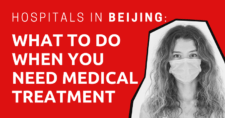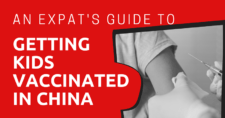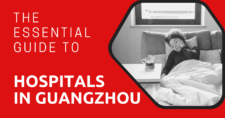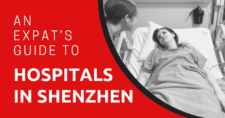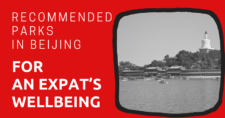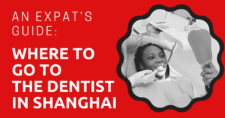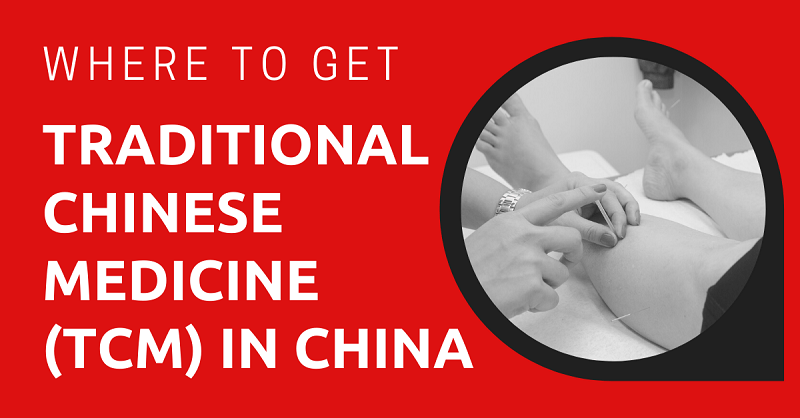
Traditional Chinese Medicine is a catch-all term for a system of wellness practices that evolved in China over thousands of years. TCM includes not just clinical practices like acupuncture, cupping, and prescribed herbal remedies. It is a holistic system of wellness that treats both the body and mind through lifestyle and nutritional changes. Practitioners look at the health of their patients as being an integrated system. Rather than simply treat the symptoms of disease, they seek to view the body as a whole and treat the underlying causes of poor health.
Healthcare in China is a mix of TCM practices and Western medicine. Even in public hospitals, there is often a TCM department and Chinese doctors are often influenced by TCM beliefs. The ancient practice is alive and well in the nation of its origin.
On most city streets, you can find pharmacies selling traditional herbal remedies and TCM clinics and hospitals are widely available and used by the general population for any number of ailments.
This article will take approximately 17 minutes to read. Don't have the time right now? No worries. You can email the ad-free version of the article to yourself and read it later!
Disclaimer: This article may include links to products or services offered by ExpatDen’s partners, which give us commissions when you click on them. Although this may influence how they appear in the text, we only recommend solutions that we would use in your situation. Read more in our Advertising Disclosure.
Contents
TCM in China Today
In the West, TCM is generally considered a supportive therapy at best to modern medicine and many doctors remain skeptical of its treatment efficacy.
In China, however, TCM is experiencing a boom and the number of those seeking treatment is increasing, especially among China’s aging population. TCM pharmacies and massage or acupuncture clinics are ubiquitous, most major public hospitals have a TCM department, and treatments such as cupping and guasha are having a global moment.
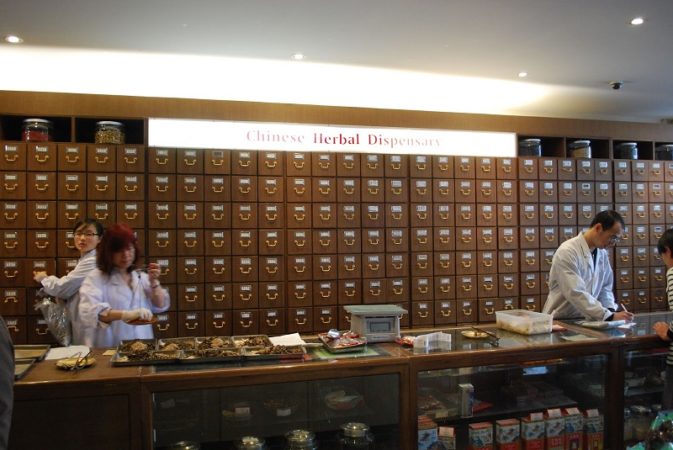
Since 2017, law has required local governments in China to promote the development of TCM. This includes the requirement to have at least one TCM institution in a public hospital as well as in a women and children’s hospital in the region.
President Xi Jinping himself is a big proponent of TCM which he calls, “a treasure in Chinese civilization” and has called for greater development in the field.
At the end of 2019, over 65k TCM medical facilities were operating in China, an increase of over 40% from 2015. Regulation and training facilities have also increased during that time as has the general standard of care. Notably, TCM has also recently been included in the WHO’s ICD document that widely influences the treatment protocols of doctors worldwide.
Where to get TCM Treatment in China
If you are living in China as an expat and want to experience TCM in the place of its origin, there are some excellent facilities throughout China to visit. But as with any medical treatment, it’s important to look for qualified practitioners and high-quality facilities.
Hospitals
All public hospitals are ranked according to their size and the quality of their facilities and staff. Look for “Tier 3” hospitals and institutions that are attached to reputable academic institutions for the highest quality of care.
In Beijing, Dongzhimen Hospital and Capital Medical University Beijing Hospital provide reliable care and are attached to academic institutions. The Beijing Hospital of Traditional Chinese Medicine is dedicated to TCM and extremely comprehensive in its facilities.
In Shanghai, Parkway Health has an excellent (and pricey) TCM department as does the less expensive Shanghai East International Medical Center.
Shenzhen is home to the Shenzhen Hospital of Guangzhou University of Chinese Medicine and Chengdu boasts the Chengdu University of Traditional Chinese Medicine.
Clinics
There are a large number of well-established TCM clinics throughout China. Here, you can receive treatments like acupuncture, cupping and massage in a smaller, more intimate setting.
In Beijing, the Tong Ren Tang Clinic has been around since the Qing Dynasty and is well known for their TCM pharmacy which has locations throughout the world.
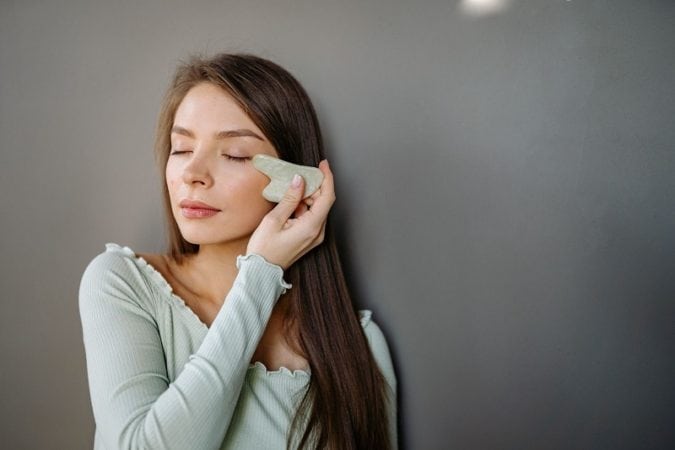
In Shanghai, Body and Soul Medical Clinics offers high-quality but expensive service in English and in Nanjing the Raffles University Medical Center has an on-site TCM clinic.
Prices of TCM in China
A huge benefit of seeking out Traditional Chinese Medicine is that it is very affordable. Overall, visiting a hospital in China can be very reasonable for good care. Even in pricey cities like Beijing and Shanghai, there are affordable health care options but there are also very luxurious hospitals and clinics – the same goes for TCM facilities.
Government hospital TCM centers should cost 400 to 700 RMB per session. Your first will require about 100 RMB as a registration fee, 200 – 300 RMB for a treatment including massage, acupuncture, or guasha, and another 200 – 300 RMB for herbal medicine to take home.
These are just averages but the prices are kept low by the Chinese government on purpose to best serve the population.
Fancy private clinics like Body & Soul in Shanghai will see you paying 4 to 6 times more than local facilities.
Many local Chinese insurance companies will cover TCM treatments at Chinese hospitals and clinics. Many international insurance companies will not cover such treatment, check with your insurance provider first if you plan to make a claim.
Will They Speak English?
The short answer is, unfortunately, no. Foreigners in China are not the target patients of TCM facilities. TCM’s nature of being traditional also attracts usually older practitioners from a generation that was not taught English in school.
If you wish to “go local” and visit affordable government clinics and hospitals for TCM treatment, you will be best having a Chinese friend with you as the language used is quite niche.
If you can afford to visit a fancy private clinic in China for TCM treatment, you will have no problem finding nurses, receptionists, and doctors who speak English. There is a rising interest in TCM around the world and in the bigger cities like Beijing, Shanghai, Guangzhou, and Shenzhen expats are more frequently choosing traditional first.
What to Expect When You See a TCM Doctor
A TCM Doctor will work to diagnose the pattern of imbalance in your body as a whole through diagnostic methods like looking at the tongue, taking the pulse, even noting your overall smell and appearance.
Diagnosis is considered a crucial step in the treatment process and your first appointment with a TCM doctor will often be solely focused on diagnosing underlying imbalances.
The diagnosis that you receive from a TCM Doctor is not the typical Western diagnosis. Instead, the doctor looks at where the imbalances of yin and yang are in the body, looks for blockages in the qi or flow of energy, and also takes the balance of the five elements into account.
Treatments may include any combination of therapies including, diet and nutrition, herbal remedies, acupuncture, movement or rest, and medical massage. These five practices are known as the Five Pillars of TCM.
Diet and Nutrition
TCM has a complex categorization system for foods that labels each item according their nature — hot (阳 yáng) or cold (阴 yīn) — the actions they produce in the body — descending or ascending — their associated meridians for application in medical practice, and their flavor — sweet, sour, salty, bitter, and spicy.
So if your doctor says that you are suffering from an overabundance of yang in the body they may recommend that you eat food with cold energy.
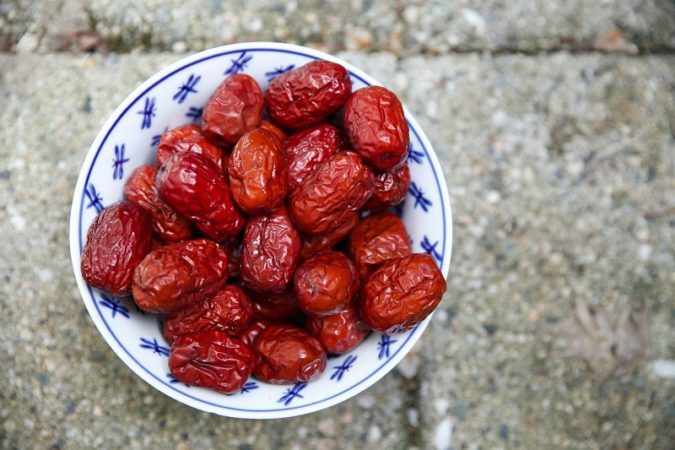
Overall, TCM recommends a diet consisting mainly of fresh foods that are in season and grown locally and using herbs and superfoods in cooking like ginger and dates for their medicinal properties.
Herbal Medicine (中药 zhōngyào)
Herbs are also classified by their natures, flavors, actions, and medicinal usage. Herbs are combined into elaborate formulas for specific medicinal uses, often handmixed for an individual patient.
Herbal prescriptions follow the holistic TCM approach and work to balance the energies in the body. Herbs may work to increase spleen qi and create heat in the body, for example, or decrease damp cold. Herbs are often boiled into tea or taken as a tincture or capsule.
Many Chinese people take TCM herbal remedies daily and will often recommend them when asked for a remedy to common ailments. Often, the herbs are pungent and are a far cry from most western medicines but can be effective to varying degrees.
Acupuncture (针灸 zhēnjiǔ)
Acupuncture refers to the practice of inserting small needles along meridian points to encourage the open flow of qi in the body. It is used to manage pain and stress, balance hormones and digestion, increase circulation, and increase fertility among a wide variety of other maladies.
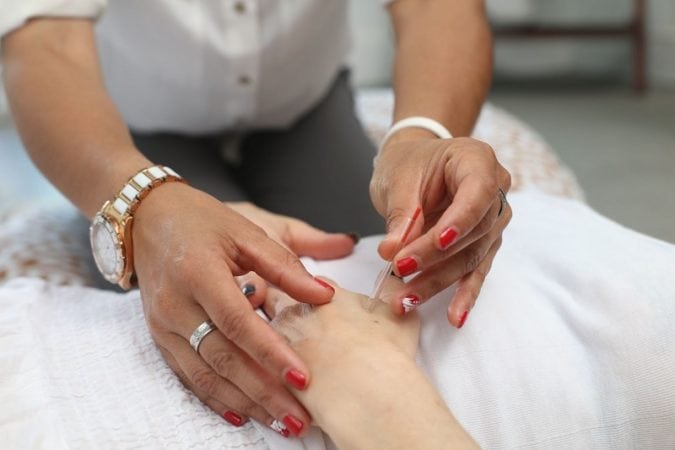
TCM doctors often use moxibustion (艾灸 àijiǔ) in conjunction with acupuncture treatment. Rather than small needles, his practice utilises the burning of herbs along meridian points.
Acupuncture has become the most well known TCM practice in the West and has been recognized as an effective treatment by the World Health Organization for 28 medical conditions although its efficacy is still widely under debate.
Movement and Rest
Movement is thought to circulate qi in the body and improve overall balance. Recommended movement in TCM tends to be mindful and slow with an integrated breath technique, usually stemming from the practices of Tai Chi and Qigong.
TCM practitioners are encouraged to live both an active and restful life. Getting an adequate amount of movement and rest into the day.
Massage (推拿 tuīná)
Literally meaning “to pinch and pull” Tui Na is a TCM massage modality that includes massage techniques that are familiar to westerners in addition to more medical massage practices that are aimed at moving qi around the body by stimulating meridian points.
Twisting, pulling, pounding, and pushing are all ways that a TCM masseuse will use to promote the flow of qi and release toxins from the body through lymphatic drainage. Massages are typically done fully clothed without the use of oil. Tools like cupping, scraping, and gua sha are commonly used.
Cupping (拔罐 báguàn)
This involves placing either glass or medical grade plastic cups onto the skin and creating suction either through the use of heat or a vacuum. The suction is thought to increase the flow of qi and release and trap qi in that area. The practice is not painful but will leave dark bruises that take a week or longer to disappear.
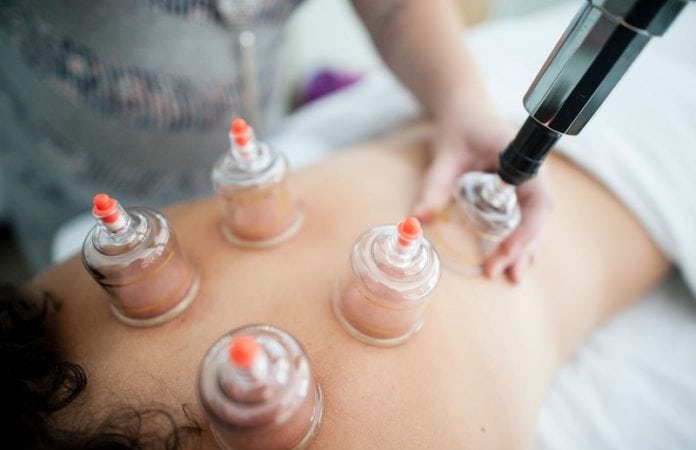
Scraping or Guasha (刮痧 guāshā)
This is also used for increasing the flow of qi in the body but rather than using cups, practitioners use a thick slab of stone to “scrape” the tissues (usually the back). This practice also leaves visible marks.
A practice that has gained some popularity in the West in recent years, facial guasha involves using a small slab of jade or other stone to massage delicate muscles, generally the face and neck, and increase the flow of qi and circulation to those areas.
Studying TCM in China
China is a fantastic place to be an international student and not just for Chinese language. There is ample opportunity for foreign students interested in studying TCM in China. The government provides a great deal of scholarship and grant money for international TCM students and researchers and there are many high quality programs at academic institutions throughout China.
Semester or year-long study abroad programs are available for those already enrolled in a degree program at their home university. Full TCM degree programs at Chinese universities are also available and take 4-6 years to complete depending on your program.
Beijing University of Chinese Medicine, Shanghai University of Chinese Medicine, and Nanjing University of Chinese Medicine are some of the best in the country.
A Brief History of Traditional Chinese Medicine
Traditional Chinese Medicine has a history that reaches back thousands of years. Evidence found in oracle bones from the Shang Dynasty (1766-1122 BC) suggests that medical practices similar to the ones used in TCM today were widely used to treat illness.
Some recent evidence even suggests that the history reaches even farther with a well-preserved 5,000 year old mummy found with tattoos corresponding to acupuncture points along the meridian system still recognized today.
The seminal TCM text still in use today called The Inner Cannon of the Yellow Emperor (黄帝内经 Huángdì Nèijīng) was written during the Han Dynasty (206 – 220 AD). The book describes practices like acupuncture, suggests herbal remedies and lifestyle practices, as well as lays out the anatomical and physiological theories for the framework of TCM.
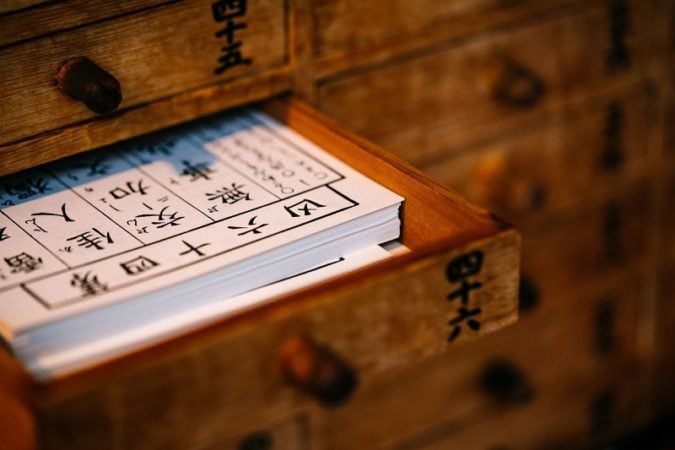
The Han Dynasty was a rich period for TCM and skilled doctors started becoming well known for their healing abilities and compiling their work into defining texts. Zhang Zhongjing (张仲景 Zhāng Zhòngjǐng) who was sometimes referred to as a Chinese Hippocrates wrote an important diagnostic manual called The Treatise on Cold Damage Disorders and Miscellaneous Illnesses (伤寒杂病论 Shānghánzábìnglùn).
Over time, Western ideas began to increasingly influence Chinese doctors and there were calls to outlaw the practice of TCM by the late 19th century. In the 20th century, however, with the appearance of Mao and the Cultural Revolution, TCM practices were encouraged as a cost effective way to receive health care treatments especially in rural China. The Chinese government collated a team of “barefoot doctors” (赤脚医生 chìjiǎo yīshēng) to serve rural populations during this time who practiced a mix of Chinese and Western medicine.
TCM Terminology
Qi
Qi (气 qì) is the life force that moves through the body in pathways called meridians. Qi roughly translates to “active energy” and if the qi is blocked or impeded for some reason or if the flow is too strong, health problems can show up in the body. Most TCM treatments center around rebalancing and restoring the proper flow of qi.
Yin and Yang
Yin (阴 yīn) and yang (阳 yáng) is another important concept in TCM and the opposing forces are interdependent on one another to maintain the balance of qi in the body. Yang represents a masculine quality associated with heat, movement, action, and dynamism. Yin represents a more passive female nature with qualities of rest, coolness, stillness, and passivity.
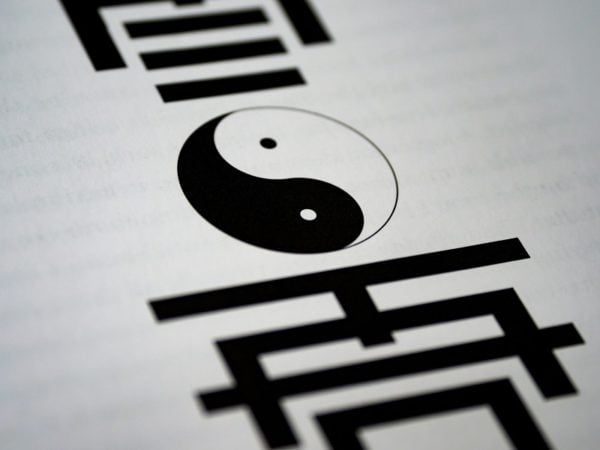
Five Elements
The Five Elements Theory suggests that our bodies interact with the natural world around us. The elements are present both in the environment and within our bodies. Fire burns and creates earth, earth hides metal elements, metal creates tools that carry water, water feeds the wood of the trees and plants, and finally, the cycle returns when wood is burned by fire. Similar cycles are said to take place in the body.
Each person is said to contain more of one element over another and many of our tendencies and troubles are said to stem from our dominant element. Most other things including organs of the body, foods, herbs, seasons, even places can be categorized in TCM by their dominant element.
Now, On to You
TCM is a tried and true approach to medicine that views both the environment and our bodies as a complete system that works in harmony when well-balanced. This approach to healthcare has grown in popularity within China and throughout the world over the last decade and will continue to see growth in the next.
While all of this seems ideal, individuals must do their own research before undergoing TCM treatment. Be aware that many products contain illegally poached and endangered animals. Understand which products contain things like pangolin scales, tiger parts, or rhinoceros horn and endeavor never to support these terrible industries.

